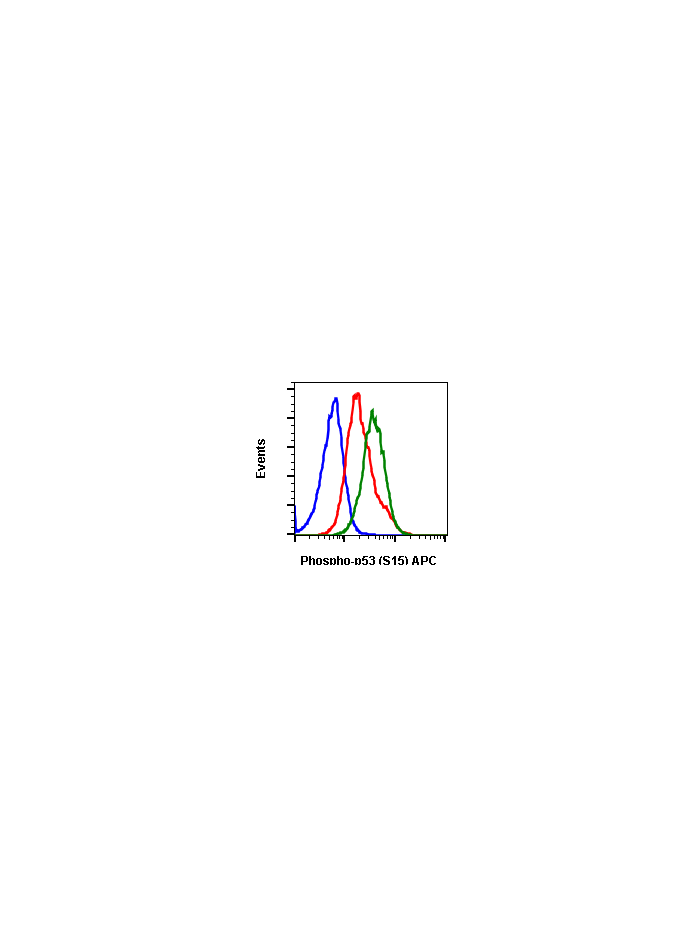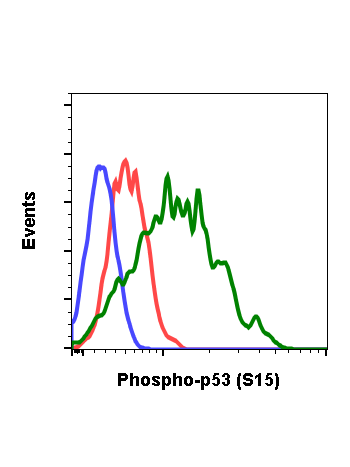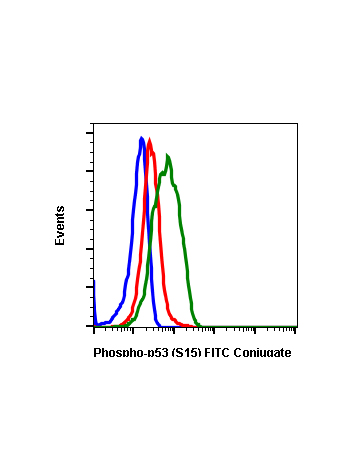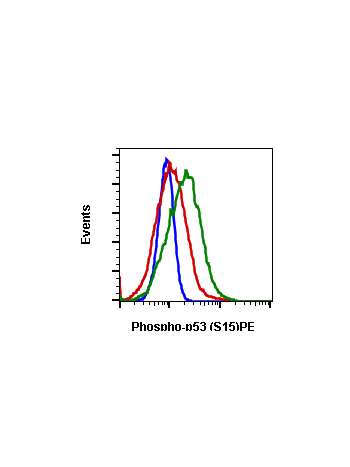Phospho-p53 (Ser15) (1C11) rabbit mAb APC conjugate
From
$99.00
In stock
Only %1 left
SKU
1189
p53 is one of the most highly connected nodes in the signal transduction network in the cell, playing a major role in basic cellular functions. p53 is the first tumor-suppressor gene to be identified, and this gene atypically functions in most human cancers. p53 inactivation in these cancers can prevent formation of homo-tetramers, increase p53 degradation, sequester p53 outside the nucleus, or prevent DNA binding and downstream gene activation. DNA damage is one of the most extensively studied p53 activation mechanism. p53 phosphorylation at the N-terminus decreases affinity for MDM2, preventing p53 degradation and leading to excess accumulation. Phosphorylation at the carboxy terminus of p53 enhances DNA binding.
| Applications | Flow Cytometry |
|---|---|
| Clone | P53S15-1C11 |
| Format | APC |
| Validated Reactivity | Human, Mouse |
| Cross Reactivity | Predicted to work with mouse, rat and other homologues. |
| Clonality | Monoclonal |
| Immunogen | A synthetic phospho-peptide corresponding to residues surrounding Ser15 of human phospho p53. |
| Formulation | 1X PBS, 0.09% NaN3, 0.2% BSA |
| Isotype | Rabbit IgGk |
| Preparation | Protein A+G |
| Recommended Usage | For flow cytometric staining, the suggested use of this reagent is 5 µL per million cells or 5 µL per 100 µL of staining volume. It is recommended that the reagent be titrated for optimal performance for each application. |
| Storage | 2-8ºC |
| Pseudonyms | Cellular tumor antigen p53, Tumor suppressor p53, TP53 |
| Uniprot ID | P04637 |
| References | Vogelstein B, Lane D, and Levine AJ. (2000) Nature. 408: 307-310. |
Write Your Own Review




